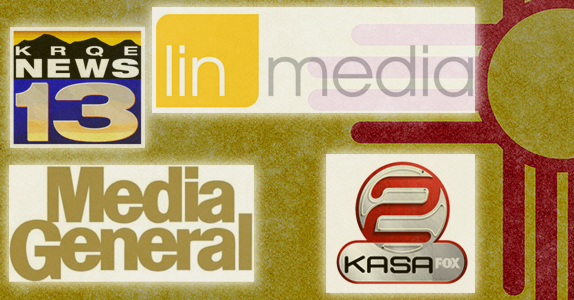
Eighty-one years ago Congress passed the Communications Act of 1934, which stated that, “the airwaves belong to the people,” a syllogism that does not stand the test of time. Corporate ownership of the airwaves is a labyrinth of holding companies and monopolies that control almost all aspects of electronic communications in this nation.
In Albuquerque, for instance, there are very few viewers who can tell you who owns the local commercial broadcast entities, like Hubbard Broadcasting, Hearst Television, or Lin Broadcasting. Who are these media conglomerates? And what do they offer in return for permission to exploit our airwaves? Don’t forget, a broadcast license is virtually a license to print money.
Fifty-four years ago FCC chairman Newton Minow delivered a speech to the National Association of Broadcasters (NAB) in which he called television a “vast wasteland” accusing the industry of an endless procession of game shows, formula comedies, mayhem, violence, sadism, murder, private eyes, and more violence—along with endless commercials. Although Minow’s speech was rated one of twenty-five “Speeches That Changed the World,” today it doesn’t appear that the electronic landscape has changed much. More networks, bigger profits, same drivel.
Mr. Minow also told those broadcasters in 1961, “When television is good, nothing…nothing is better,” adding, “I urge you to put the people’s airwaves to the service of the people and the cause of freedom. You must help prepare a generation for great decisions. You must help a great nation fulfill its future.
“Television and all who participate in it are jointly responsible to the American public…for community responsibility, for the advancement of education and culture…” and he added a lot more; but lastly it should remind the viewer “of the responsibilities which the citizen has toward his society.”
Which brings me to the appalling state of commercial broadcast television in Albuquerque. Following the FCC’s relaxed rules that allowed broadcasters to own more than one station in the same market, there was a rush by these conglomerates to buy them up.
Lin Media, a holding company that owns about 43 TV stations, acquired both Fox 2-KASA in 2007, and CBS 13-KRQE in 2005. In March of last year Media General of Richmond, VA, announced it was merging with Lin in a $1.6 billion deal. This increased Media General’s ownership to 74 stations, a 23 percent slice of U.S. households.
Does KASA or KRQE operate in the “public interest”? They carry their prospective network’s programming, syndication re-runs, and with one newsroom they merely repeat the news programs from one channel to the other; they also sell copious amounts of time in large blocks—those dreaded infomercials—to advertisers. I did not search out the amount of paid advertising hours, but just sit down and watch for yourself. This is a violation of the public trust (if not a violation of antitrust laws, because they also broker advertising at the same time they sell on-air time). The fact that the FCC allows this kind of profitable usurpation of our rights must somehow be a violation of intent—why are these faceless corporations allowed to rake off profits from peddling the public airwaves, offering the local community very little in return?
Economically, beside a few jobs, and some taxes, the profits are sent out of state to stockholders of these corporations, and to their home bases in Virginia, Texas, Minnesota and New York.
As long as these media giants control the greatest tool for change we possess, broadcast TV will never achieve its promise, and Mr. Minow’s criticism will remain an odd footnote to an industry that sees only profits, eschewing any responsibility to a public that by law owns those airwaves.

January 22, 2015